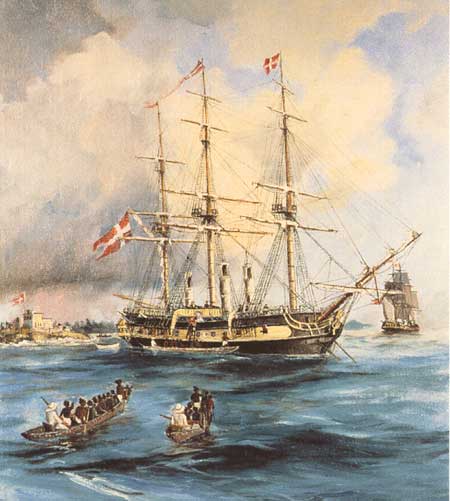The Slave Ships – 1500 to 1870
The Trans Atlantic Enslavement Industry
The foundation of capitalism, wealth, power and
privilege in the Western World
1470 to 1870
355 years – over 35,000 voyages – millions of lives.
Click Image Above for Interactive Experience
From the industry’s beginning in the 16th century to its conclusion in the 19th, slave merchant traders shipped the vast majority of the captured African people to the Caribbean and Brazil. Of the more than 10 million enslaved Africans to reach the Western Hemisphere, it is estimated that 388,747 people were shipped to North America, 1.3 million people to Spanish Central America, 4 million to British, French, Dutch, and Danish colonies in the Caribbean, and the 4.8 million people to Brazil.
This interactive, designed and built by Slate’s Andrew Kahn, gives you a sense of the scale of the trans-Atlantic slave trade across time, as well as the flow of the ships and eventual destinations. The dots in the interactive media above, represent individual slave ships and correspond to the size of each voyage. The larger the dot, the more enslaved people on board. You can pause the map and click on a dot to learn about the ship’s national origin, its destination, and its history in the slave trade. The interactive animates more than 20,000 voyages cataloged in the Trans-Atlantic Slave Trade Database. (We excluded voyages for which there is incomplete or vague information in the database.) The graph at the bottom accumulates statistics based on the raw data used in the interactive and, again, only represents a portion of the actual slave trade—about one-half of the number of enslaved Africans who actually were transported away from the continent.
There are a few trends worth noting. As the first European states with a major presence in the New World, Portugal and Spain dominate the opening century of the trans-Atlantic slave trade, sending hundreds of thousands of enslaved people to their holdings in Central and South America and the Caribbean. The Portuguese role doesn’t wane and increases through the 17th, 18th, and 19th centuries, as Portugal brings millions of enslaved Africans to the Americas.
In the 1700s, however, Spanish transport diminishes and is replaced (and exceeded) by British, French, Dutch, and—by the end of the century—American activity. This hundred years—from approximately 1725 to 1825—is also the high-water mark of the slave trade, as Europeans send more than 7.2 million people to forced labor, disease, and death in the New World. For a time during this period, British transport even exceeds Portugal’s.
In the final decades of the trans-Atlantic slave trade, Portugal reclaims its status as the leading slavers, sending 1.3 million people to the Western Hemisphere, and mostly to Brazil. Spain also returns as a leading nation in the slave trade, sending 400,000 people to the West. The rest of the European nations, by contrast, have largely ended their roles in the trade.
By the conclusion of the trans-Atlantic slave trade at the end of the 19th century, Europeans had enslaved and transported more than 12.5 million African people. Historians estimate that at least 2 million people did not survive the journey.
By Andrew Kahn, Interactive Editor, Jamelle Bouie, original “Slate” Staff Writer with interactive image by Tim Jones.
Slate Academy: The History of American Slavery.
Data Base Source: www.slavevoyages.org
